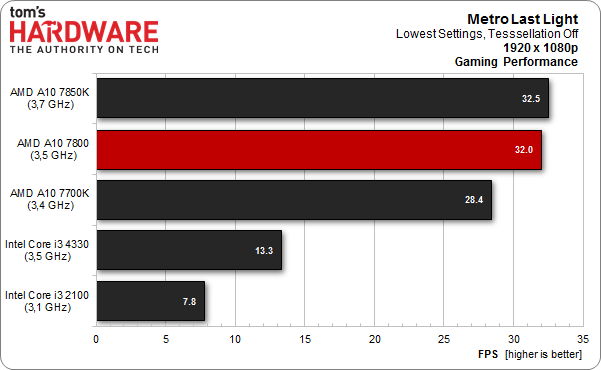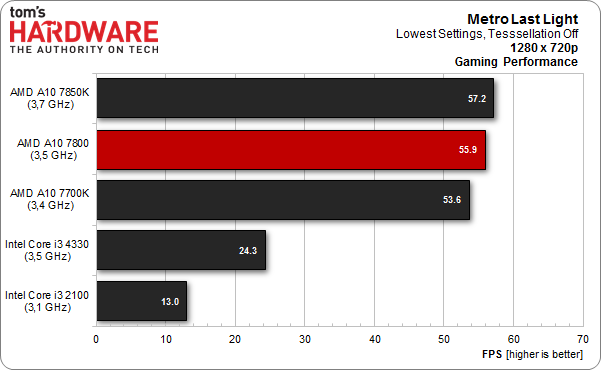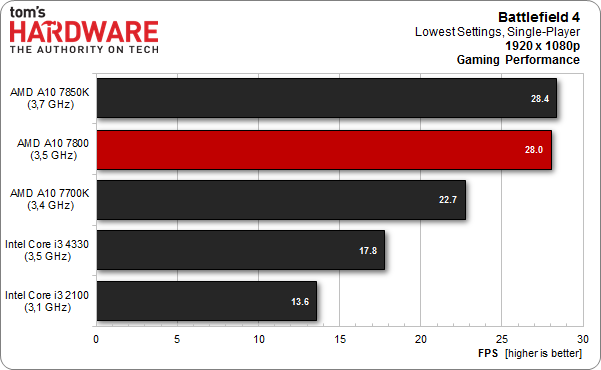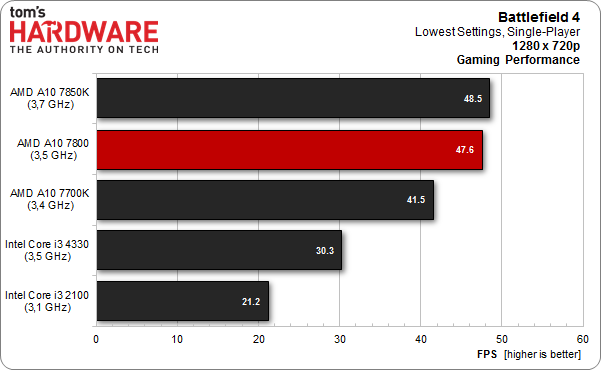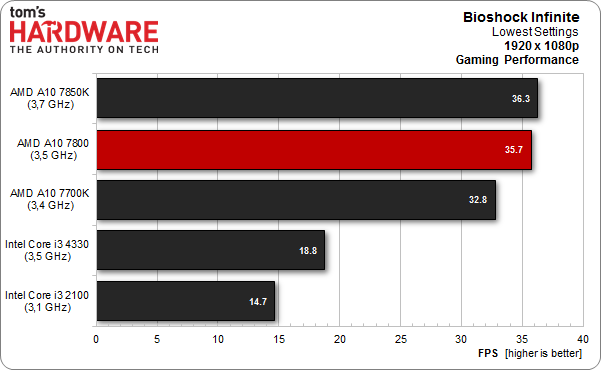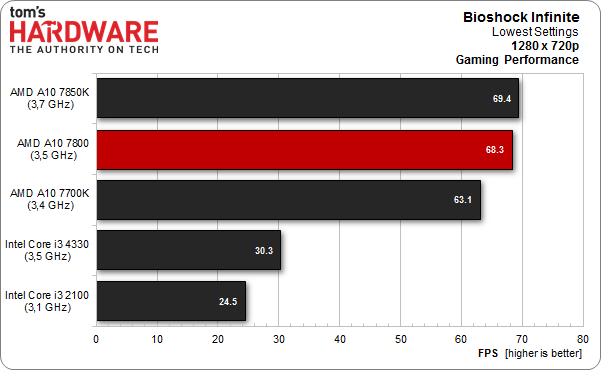AMD A10-7800 APU Review: Kaveri Hits the Efficiency Sweet Spot
AMD recently introduced another model in its A-series APU family called the A10-7800. While we already know a lot about the Kaveri architecture, this particular chip's power profile makes it more interesting than the performance-oriented incarnations.
Results: Gaming
We want to test AMD's APU as it sits on the motherboard. I see no point in buying a processor that emphasizes on-die graphics and then adding a Radeon R7 265X, even in CrossFire. Such a configuration makes little sense from the cost and technical angles. Yes, AMD officially recommends it and yes, we tried it out. But the much faster discrete card is a mismatch for the on-die engine. We even experienced detrimental effects like stuttering from this odd couple. If you want to go the add-in route, take a look at the Athlon X4 750K (or Pentium G3258) instead.
Let's instead stick to a setup better suited to the strengths of an APU: a more highly integrated all-in-one system with as few external components as possible.
Metro: Last Light
Both upper-end APUs will run at 1080p in this game, but they barely manage to average over 30 FPS. You're better off at 720p, where even the A10-7700K generates playable performance.
Battlefield 4
Battlefield 4 is another AAA title that can't be ignored. In single-player mode, however, where the graphics subsystem is emphasized, the APUs have a tough time maintaining adequate frame rates. You really need to run this one at 720p. Fortunately, the graphics look better than they sound.
BioShock Infinite
Since the third game in the BioShock franchise is a thinly disguised console port, its frame rates are adequate to good at 1080p.
The A10-7800 lets you play older games at medium quality settings and newer titles at lower details without discrete graphics. If you run into frame rate issues, consider lower resolutions. In other words, a Kaveri-based APU by itself is suitable for low-end gaming PCs. Since AMD's processors also drive both of the latest game consoles, we don’t expect this situation to change any time soon. We didn’t mention Mantle because most games don’t use Mantle.
Get Tom's Hardware's best news and in-depth reviews, straight to your inbox.

Igor Wallossek wrote a wide variety of hardware articles for Tom's Hardware, with a strong focus on technical analysis and in-depth reviews. His contributions have spanned a broad spectrum of PC components, including GPUs, CPUs, workstations, and PC builds. His insightful articles provide readers with detailed knowledge to make informed decisions in the ever-evolving tech landscape
